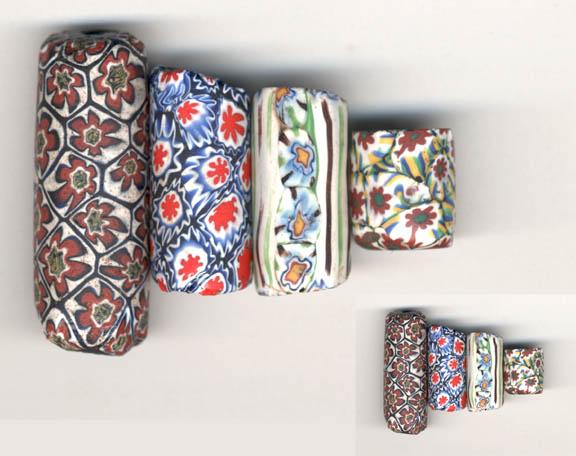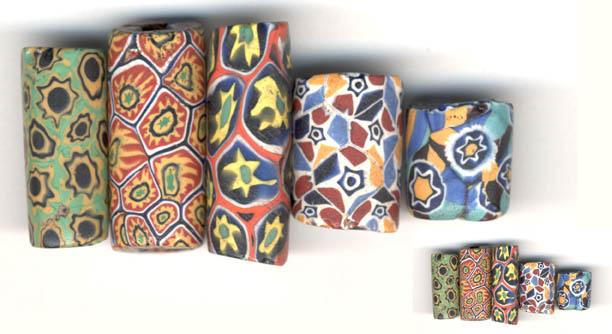|
These five beads featuring star canes are all pretty unusual. A couple are actually rare in my experience.
The left bead has fairly conventional stars in terms of shape and layer number, but the color scheme, emphasizing yellow and black on a lime-green background, is different.
The canes on the next bead feature a star within a star---the center being a six-pointed bright green star, surrounded by a twelve-pointed yellow star. The pattern of the next bead also shows a six-pointed yellow star, with a green center, and on a dark blue background outlined in white and red.
The fourth bead is one of the weirdest I have seen. Technically, it may not consist of a molded star, but may instead have become star-shaped through the addition of the elements around it. (We can see the same thing happening in the central element of number 38 in the Chart.) Here, a blue-white-blue-white cane has been turned into a five-pointed star, and the background behind it (or beyond it) is formed by five single canes of brick-red, medium blue and dark blue, and yellow. These elements are triangular, and their insertion could have caused the primary cane to become star-shaped. The whole cane then has two very thin layers of medium blue and white glass applied.
The final star-cane bead has a pattern that consists of five layers, molded into a six-pointed star at the fourth white layer; and the cane is elaborated by the addition of broad multicolored stripes. These outer stripes are blue, green, yellow, and purple. Each stripe is made from several small rods placed close together. The resulting effect is that they have changed the surface of the white layer below, and the demarkation between appears jagged, as we usually see between the layers of composite canes. These stripes are, after all, composited.
In selecting the beads I have shown in this series, I went over several hundred beads in my collection, and initially choose 80 that I considered to be the most unusual or rare. And from these 80 beads, I have only shown a small number. If I have any energy, I may put up more after the weekend, if anyone is interested.
|
|



